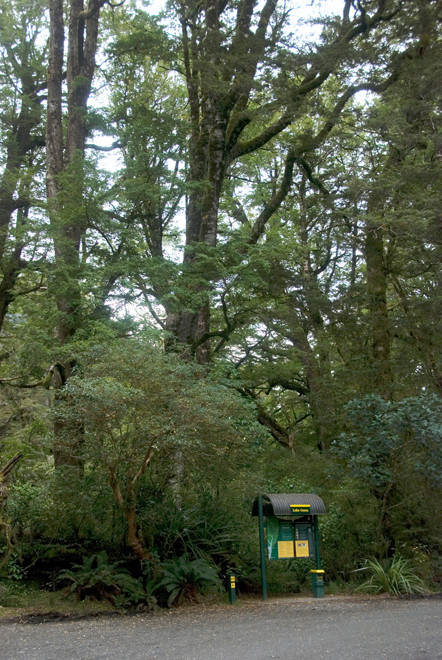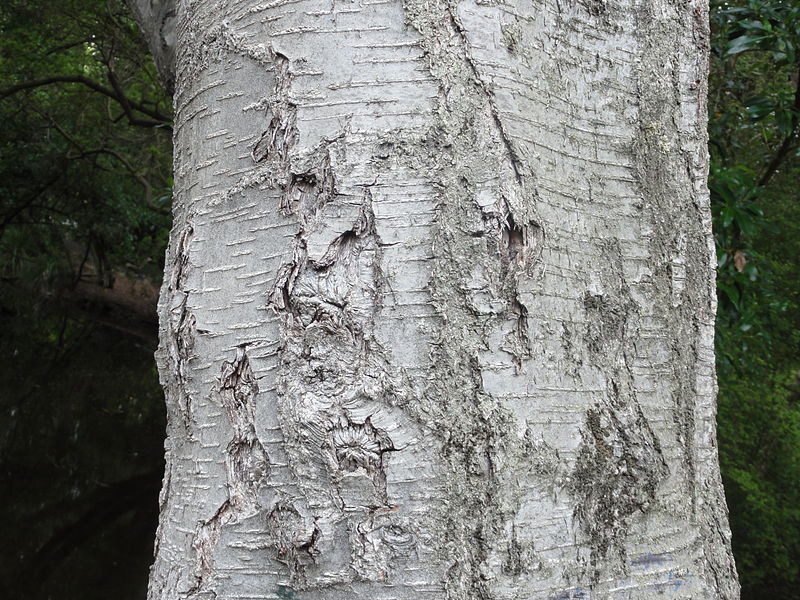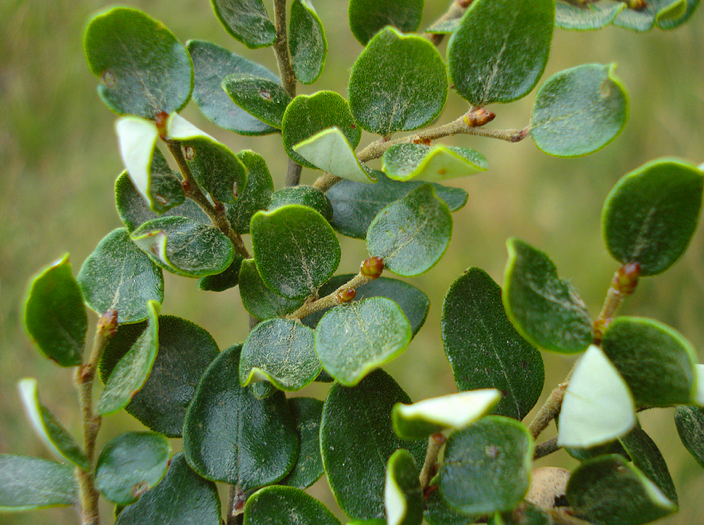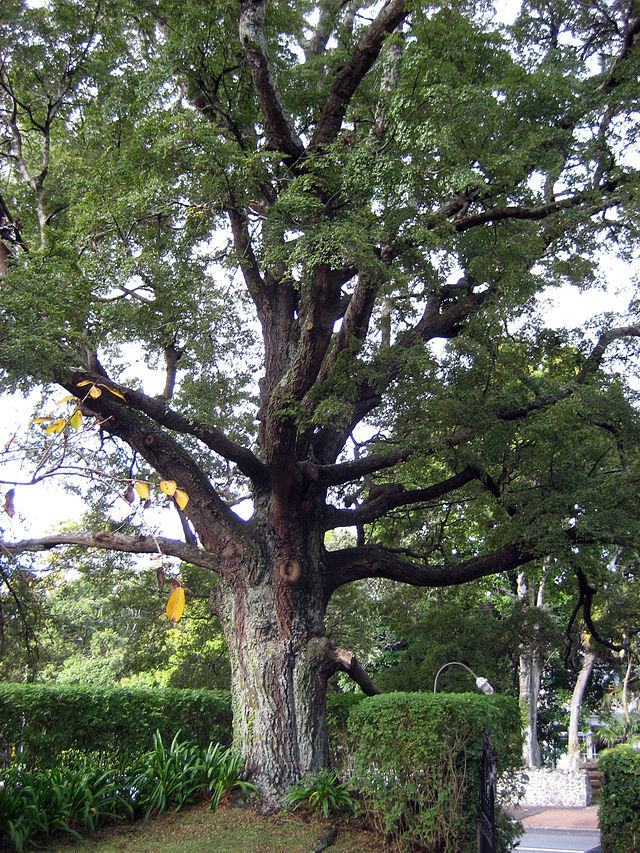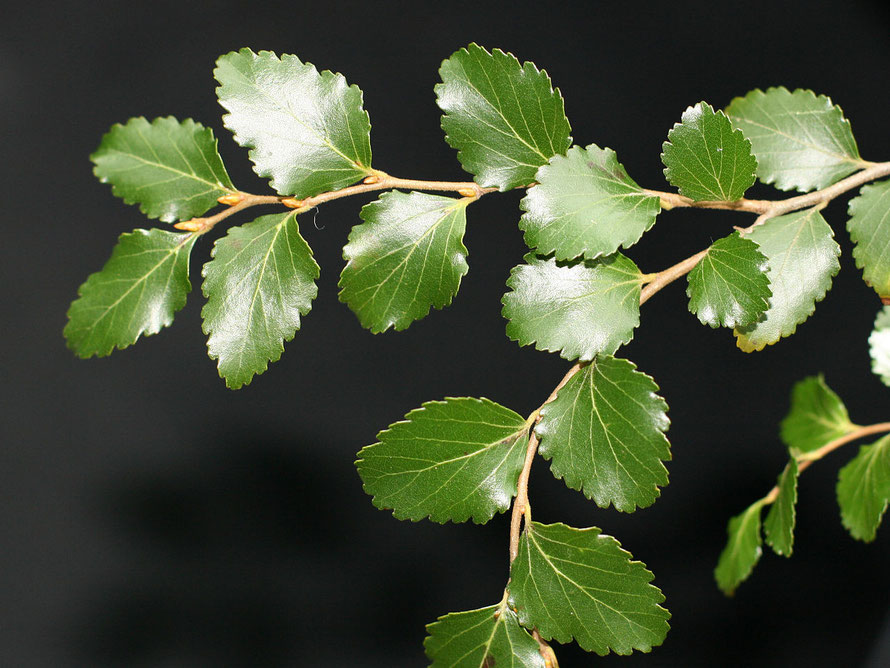III. New Zealand Beeches
The misnamed beeches
The beeches of New Zealand were thought to belong to the beech family Fagaceae. But they do not and a new name had to be invented - Nothofagaceae - which means 'bastard' or
'false' beech.
This is hilariously indicative of Euro-centric mindset that seems to see the widespread family (there are 36 species in the genus Nothofagus occuring in southern South America - Chile, Argentina - and Australasia - east and southeast Australia, New Zealand, New Guinea and New Caledonia) as but a poor cousin of the 'real beeches' of Europe.
The Nothofagus are nevertheless related to the oaks and true beeches (Fagus) of the northern hemisphere but are evergreen and have smaller leaves.
The bark of all the beeches, except when young, is rough and fissured. The tree crowns, especially in more open situations, are wide and deep and particularly in mountain and black beech, the foliage is often arranged in distinctive horizontal layers ...
The beech seed are 5-8 mm long with narrow wings. It is considered that they are not capable of being dispersed for more than a few kilometres and then only with strong winds ...
Beech forest has a uniform, generally dark green colour and a smooth to moderately uneven surface. There are no emergent trees.
In beech forests there are clearly fewer species present. Epiphytes are generally absent with the exception of epiphytic mosses and lichens on the trunks and branches. The forest floor has a deep carpet of leaf litter and cushions of moss kidney fern (Trichomanes reniforme) is abundant. The forest is typically tranquil and orderly in appearance but becomes more complex with higher rainfall. Here growth is more luxuriant, due to 'a profusion of lichens, mosses, liverworts and moss-like filmy ferns clothing the forest floor and trunks and branches of the trees'.
Red beech gives way to silver beech, which gives way to mountain beech as temperatures become colder and soils become thinner and less fertile.
In the southern part of the South Island the tree line starts between 950m and 1250 m. This is lower than for trees at comparable latitudes and seems to be due to the checking of summer temperatures by the proximity of the cooling impact of the sea (see J. Dawson, Forest Vines to Snow Tussocks, 1988 p. 123-7).
Southern Beech Forests
See also here my page Milford Beech Forests

Beech forests of South Island
All below from Te Ara Southern
Beech Forests
Beech forest usually grows in hilly or mountainous areas and pure beech forest comprises almost half (about 3 million hectares) of New Zealand’s remaining native forest. Forests of beech and other tree species make up one quarter (about 1.3 million hectares).
Beech trees are found in 80–90% of native forest in the South Island, but in only 40% in the North Island. They do not grow naturally on Stewart Island.
Beech forest is typically less complex than other types of native forest:
- There are few other species in the canopy layer.
- There is a sparse, open understorey mostly made up of young beeches.
- There are few epiphytes (perching plants) or climbers (see DOC Beech Factsheet).
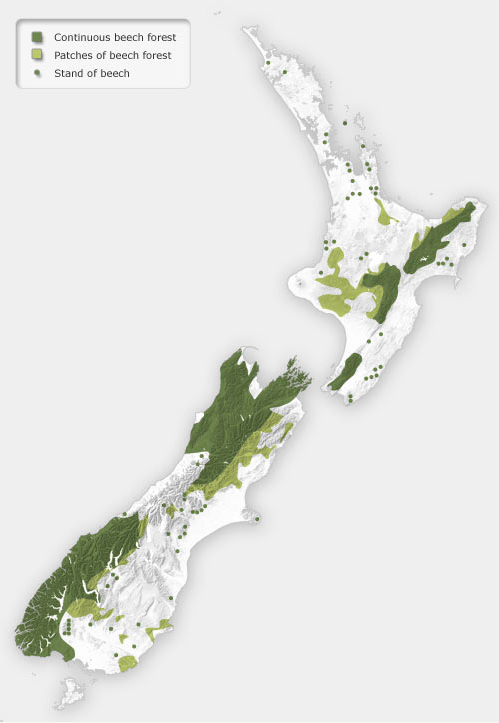
The forest generally occupies infertile sites and forms a slowly decomposing, low-nutrient leaf litter which, because of its acidity, accelerates leaching and further reduces soil fertility.
In this and its evergreen composition it is markedly different from northern temperate forests which are characterised by rapid leaf litter decay and rising soil fertility and the New Zealand beeches seem to stand between the European beech as a type and the vast northern coniferous forests J. Dawson, Forest Vines to Snow Tussocks, 1988 p. 132
There are similarities between the European and New Zealand beeches. They both have uniform canopies of single species forest with little understorey and very restricted light levels on the
forest floor with few breaks in the canopy. Neither is tolerant of epiphytes or parasitic plants.
The main difference seems to lie in the habitat and terrain to which the trees are adapted and the soils that their leaf litter forms. The New Zealand beeches seem more akin to the the European
evergreen Holm Oak with their leathery and slow-decaying leaves which blanket the forest floor with a growth suppressing mantle.
Beech Gaps
These gaps may have been created when glaciation or volcanic activity destroyed forests. The beech gap in central Canterbury may have been caused by drought. In the past, all forest in the area
was destroyed by fire – naturally caused or lit by early Māori. The beeches then failed to regenerate because the climate was unsuitable or there was competition from other plants. Beech is
particularly slow to spread because its seeds are dispersed by wind or water, and its seedlings' roots have to establish a relationship with specialised fungi to survive (Te Ara Southern Beech Forest
Distribution).
The beech gap starts at about Knights Point, north or Haast, and runs up to Greymouth. It crosses the main divide in this area and in its southern half beech absent throughout the upland region where they might be expected to be (see map above (see also Gibbs Ghosts of Gondwana, 2006 pp177-8).
The Beech Species
Red Beech/Tawhai raunui (Nothofagus Fusca)
Red beech (N. fusca) is the tallest beech and prefers the foothills and inland river valley floors particularly where soils are fertile and well drained.
Tall forest tree bearing masses of small sharply-toothed leaves that also have a small hairy pit at the junction of the veins. Trunk flaky. Leaves 2-4cm long. Flowers and fruit small and usually inconspicuous but change colour of tree when in flower (NZPCN)
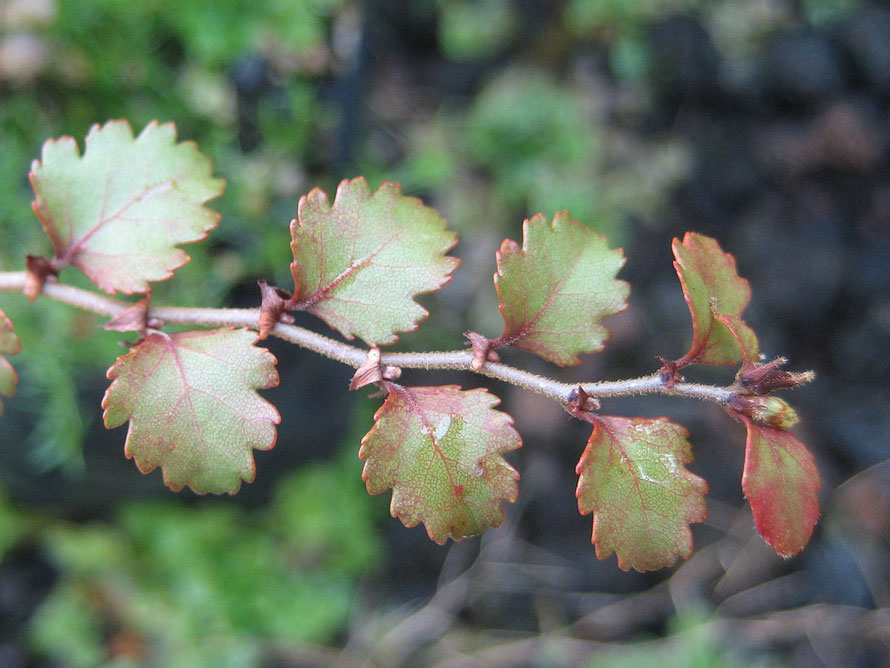
Silver Beech/Tawhai Nothofagus menziesii
Silver beech (N. menziesii) prefers higher, wetter conditions. Silver beech is the most widespread tall tree in Fiordland.
Its bark is whitish in colour, particularly in younger specimens. It grows up to 30 m tall. The trunk is often buttressed and may be up to 2m in diameter
Mountain Beech/Tawhai rauriki Nothofagus solandri var. cliffortioides
Mountain Beech (N. solandri var cliffortioides) grows in the mountains and on less fertile soils than silver beech, often forming the tree line at high altitudes
Smaller (20 m) than the Black Beech. Near the treeline forms a "goblin forest" where the trees are no more than 2m tall. Leaves are elongated and have a pointed end.
Black Beech/Tawhai rauriki Nothofagus solandri var. solandri
Larger than the mountain beech and often covered with a sooty mold that attracts a scale insect that excretes honeydew, an important bird food.
Hard Beech Nothofagus truncata
Tall forest tree bearing masses of small bluntly-toothed leaves that only occasionally have a small hairy pit at the junction of the veins. Leaves 2.5-3.5cm long, teeth irregular in size. Flowers and fruit small and usually inconspicuous but change colour of tree when in flower.


